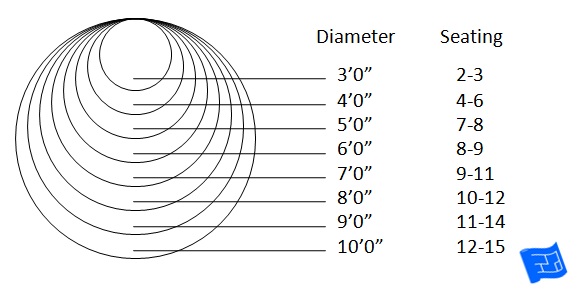Rustic Kitchen Tables are one
of the larger items we sell regularly at Redwood Burl Inc. By larger, I
mean up to 20 plus feet in length. Rustic can have many meanings. Here
is a link to Rustic Furniture on Wikipedia. When most people think rustic kitchen tables, they think Farmhouse Table. These were usually made using Salvaged materials, or whatever materials were available to you at the time.
Here,
in the "Heart of Redwood Country" Humboldt County, CA, people have been
taking a different approach to Salvaged materials for over a century.
We've been using Salvaged Redwood to make our version of the "Rustic
Kitchen Table". One big advantage to using Salvaged Redwood is we are
able to make rustic tables out of a single piece of wood. This is due to
the incredible size that Redwood Trees grow; having a diameter of close
to 30 feet at the base. In fact, a newer "Fatter" tree was just recently discovered.
Today,
Old Growth Redwood Trees are a protected resource. Barely a quarter of a
million acres of Old Growth remain. They are found either in State
Parks or Forest Reserves of some type such as the Headwaters Forest pictured below.

Photo courtesy of Save the redwoods league
ETHICAL SOURCING
Before any wood can enter our facility, it must be inspected. We have to know where the wood came from and how it was obtained. Whether it comes from private property or a large lumber company, we are looking for either Salvaged "Buckskin" Logs or harvested tree stumps from private land. Our "How we do it" Page will give you more information on this.The owner, Landon Buck, personally authenticates the origin of all wood before transporting it to our yard, where it is stored until milled into slabs. We are very resourceful, and from what I've seen, we can transport pretty much anything, either by truck with a Gooseneck trailer or a logging truck if need be.

On occasion, the wood sometimes needs a bit more processing before being moved to our facility. In this case we just have to make it smaller and more manageable, as you can see in the following video:
Rustic Kitchen Tables - Milling slabs from logs & stumps
We
usually store our wood in our large main yard until it is slated to be
processed into a more usable form, such as a slab. We have several mills
here at our facility, each one for cutting a different type of
material. In the spirit of keeping some secrets, this page is only going
to be focusing on our older technology.
In the following short video, you can see one of our mill operators cutting slabs out of a Salvaged Redwood Root Burl:
We
are very fortunate to have a big enough facility to store all of our
cut slabs indoors, year round. All of our wood is stored with "stickers"
between them allowing air to move between to slabs, dissipating
moisture into the air at a higher rate. In addition, five big truck
doors on our warehouse ensure plenty of air flow through our building.
Here are some pictures of our storage areas. If you are looking for
Rustic Kitchen Tables, our indoor facility is right up there with a trip
to heaven from what I've been told.
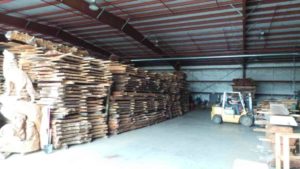
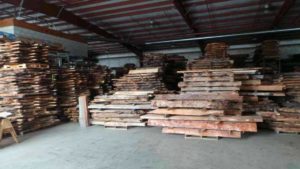
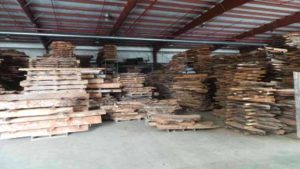
Rustic Kitchen Tables - Determining the size of your table
When
determining the size of your rustic kitchen table, there are a few
things to consider. The first is the size of your room and the space
available for your table. You then need to consider how many people
you're going to want to seat around that table. Lastly, you will need to
take into consideration any environmental considerations such as
chandeliers and the like, in case you need to ensure the table is
positioned in a certain way.
When
considering room size, you will want to leave 42" to 48" of space
around your table for walking and room for moving chairs back away from
the table. Also consider other items that will be in the room, such as
buffets or serving carts, etc. You can better visualize the tables
actual space by setting a sheet on the floor, folded to your table size.
Newspaper or cardboard templates will also work.
To
determine how many people will be able to sit down you want to start
with a slab with a width of about 36-40". We then usually estimate about
24" per/person. A 4' long slab seats two people on each side while a
10' table seats five per side. This allows one person on each end,
unless your table is in the 4'+ width range, then you might be able to
put two or more on each end.
Round or square tables are also an option, below is a chart for sizing round tables:
Lastly,
you will need to determine the height of your table. For this, we need
to consider your seating arrangement. Normal table height is about 28"
to 30". However, if you have chairs with arms, you will need to measure
the arm height and table thickness to determine your final height. For a
counter height rustic kitchen table, you are looking at about 36" tall.
For a bar height kitchen table w/ bar stools, you would want closer to
40" tall to enable you to scoot under the table top a bit.
I myself have a bar height kitchen table/kitchen countertop with bar stools all the way around it. Because of the height I've been able to use a wide base that incorporates some sturdy shelving to store our cast iron pans. The base is also far enough from the edge of the slab top to accommodate wheel chairs as well.
Rustic Kitchen Tables - Types of Grain
Once
you have determined the size of your Rustic Table, you are ready to
move on to the next step and pick your slab. You will find our site is
broken up into sections accordingly. Your longer table are going to
require a Tree Slab. These are cuts from the longest part of the tree,
the trunk. This is where our big logs come from. For a square or round
table, you would want to take a look at our Burl Slabs.
These are from the stump area of the tree and are wider. Keep in mind,
these burl slabs may need to be cut and shaped to your final dimensions.
Now
it is time to consider what type of Character you want for your table.
This is essentially the type of grain you're going to want. The more
economical slabs have less going on in them grain wise , or what we
refer to as straight grain.
Straight grain and Curly grain Pictures:
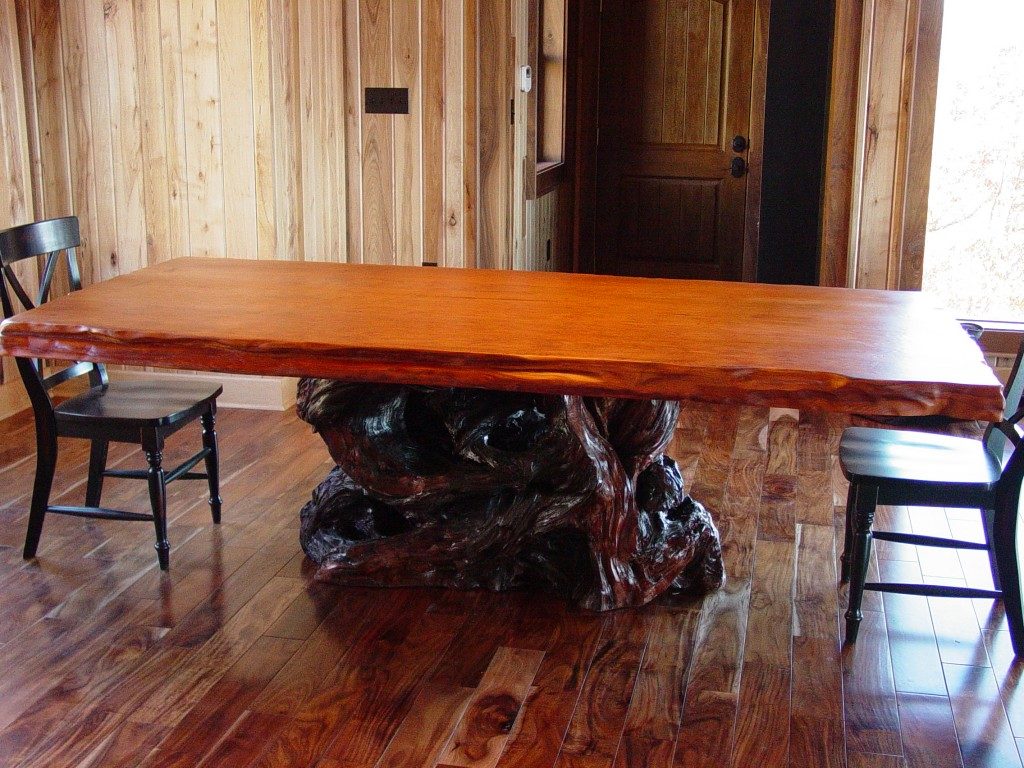
Rustic Dining Table w/Straight Grain. Photo Courtesy of www.littlebranchfarm.com
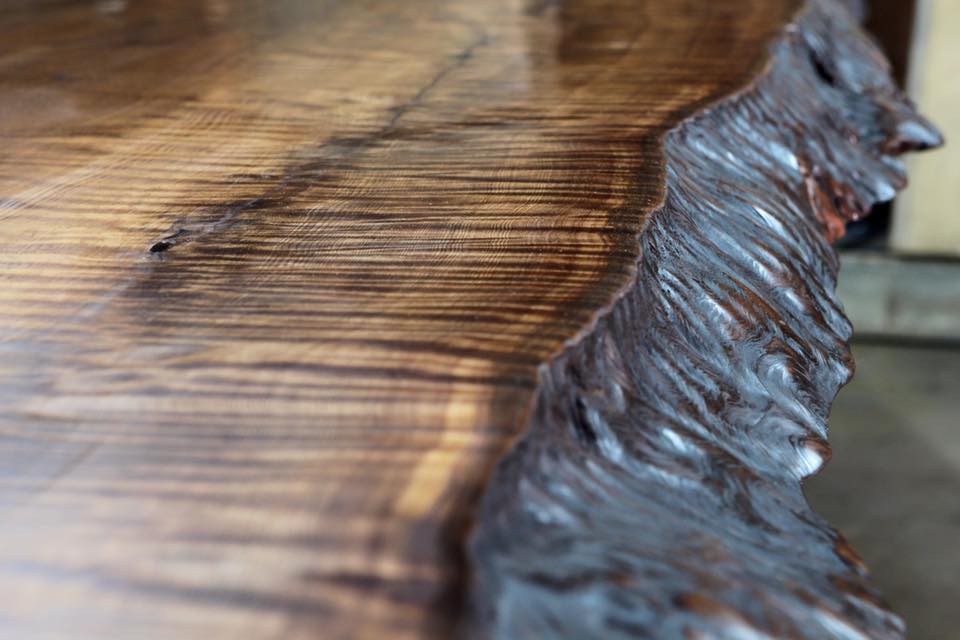
Curly Grain Rustic Kitchen Table Photo courtesy of www.littlebranchfarm.com
For
pieces with more character, or better grain, it helps to know what type
of grain you are looking for. Take a peek at this page on our site for
more information on Burl and its grain patterns. The better the grain, the higher the Premium will be on that wood.
The
reason for the Premium is that not all Redwood has spectacular grain.
Salvage Logs tend to have better grain than most logs in general. This
is because most Salvaged logs are usually Buckskins, or logs from a
previous harvest. These logs were left behind because they were not
lumber quality. At the time, these logs were not worth moving and were
left where they fell. These logs were not Lumber Quality because they
had spectacular grain that was not suitable to be milled.
Curl
is a perfect example of spectacular grain that looks incredible in a
Rustic Dining Table. Curl is a Compression Grain. It is caused when
trees grow on a hillside, straightening themselves out in the process.
This straightening causes a compression grain on the uphill side of the
tree, usually along the edge, but on rare occasions all the way across
as well. Because Curl is so rare, these high quality pieces demand a
premium price.
Another
factor that will effect price is width. Wider slabs get a premium price
for the same reason, they are far and few between. Since large Redwoods
are no longer harvested, the only way to get these wider Salvaged Logs,
is to buy them from the lumber companies. They know what they are
selling, and they too demand a premium as well.
Today,
good Burl is not as readily available as it once was, even here in the
Heart of Redwood Country. People have been hunting burls here for more
than 100 years. It was always a good way to make some income on the
side, especially in the off seasons. Most people accumulated small stock
piles of burl material, to come back for in the off season, which can
last several months here on the West Coast. The point being, that all
of the easy burls to get, have already been got.
With
the policies that we have in place today. We are no longer purchase
wood from just anyone trying to sell it for a good price with out
knowing its provenance. Today, we've taken a firm stand in favor of our
environment. If it came to the point where we were not able to get more
logs due to an end in supply, we have the inventory to be able to keep
our mills running 8 hrs. a day for another 5 years or more.
Rustic Kitchen Tables - Choosing your slab
Now,
having your final dimensions and an idea of what you are looking for in
terms of Character, it time to build a table. For your larger rustic kitchen tables, I would suggest you start on our Dining Tables Page for slabs over 36", and our Conference Tables
for slabs in the 44" - 60" range. Basically what you are looking for is
something the right size or larger than what you actually need, as we
can always re-size the slabs smaller. As I've mentioned previously,
prices on the same size piece of wood may vary based on the grain, so
find the combination you feel comfortable with, and give us a call.
If
you don't see just what you are looking for, take note of the slabs you
do like, even if they are sold or too small. When you call, let us know
what it is about those pieces that you like, and in our vast inventory
we can most likely find you the perfect piece. Only a small fraction of
our inventory can be put online and we make updates daily.
Rustic Kitchen Tables - Finishing
Once
you have decided on a slab, it's time to think about finish. The beauty
of buying your slabs from us is, that you can buy just the material and
finish it yourself, or buy a fully finished table ready to use. I
personally am the do it yourself kind of guy so I have to do it myself!
Last year I took a slab home for the kitchen in my own home, but it was
not quite ready for a hard finish. I stained it, installed it, and I'm
going to finish it right this summer.
If
you decide to "do it yourself", you can have your slab shipped directly
to your home or a commercial address of your choice. We can help you
pick a finish based on your application, and give you some pointers
along the way. You can also find information right here in our Blog.
The
other option is to have the table fully finished for you. You can order
it already finished from us or have it done locally. We are able to
finish right here in house and we do a fabulous job. We can also have it
finished by the best finisher we know, who has been working with our
wood for years. Kelly at www.littlebranchfarm.com.
We can arrange to have it shipped there on his next regular shipment at
no charge, and you will just pay for the shipping from Nashville, TN to
your location.
Kelly has
been finishing tables for us for years now. He uses his own proprietary
finish that dries good and hard and lasts for years. The main reason we
do not finish everything in house is climate. We are within a mile from
the West Coast, and our average daily temperature is only 60°, not warm
enough for a finish to dry most of the year. While Nashville has more
extreme weather, it is much warmer overall. This makes it more suitable
for getting a nice finish to dry.
Rustic Kitchen Tables - Shipping info
We
can ship our slabs anywhere in the country and also internationally. We
will get you a big discount off of normal Fed Ex and Con-Way shipping
rates. Shipments to a commercial address are going to save you a bit of
money but we are also able to offer residential delivery with lift-gate
service right to your door. Finished tables do ship at a higher rate than raw wood, but we still get you that big discount!
service right to your door. Finished tables do ship at a higher rate than raw wood, but we still get you that big discount!

